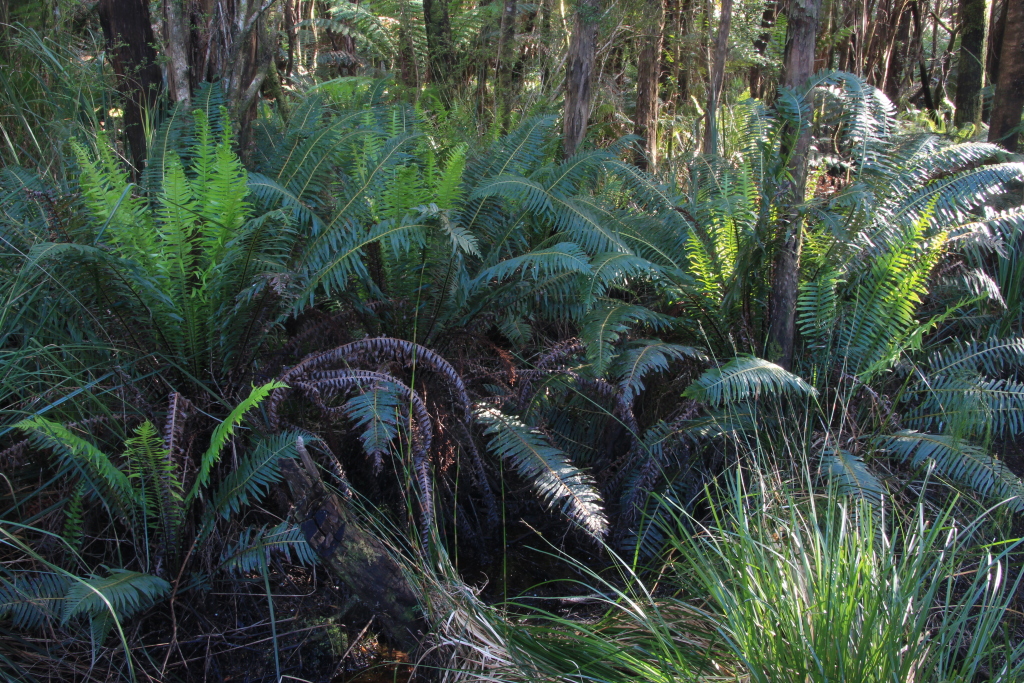Blechnum nudum
(Labill.) Mett. ex Luerss.Rhizome erect, thick; sometimes forming trunk. Fronds tufted, erect, thinly leathery, 40–60 (rarely to 120) cm tall; sterile and fertile fronds dissimilar; young fronds yellow-green. Stipe short, comparatively thick, black and shiny; scales near base long, dark and shiny. Sterile frond lamina broad-lanceolate, once pinnate, mid-green, paler below; pinnae close-set, usually straight and perpendicular to rachis (often somewhat curved towards top of frond), attached by wide bases, narrowly oblong, margins entire, apices acute to rounded; lower pinnae much reduced in size, rounded. Fertile fronds stiffly erect, shorter than sterile fronds; pinnae numerous, separated, short, slightly curved, coarse. Sori covering underside of lamina on each side of midvein. Fishbone Water-fern,
Wim, GleP, VVP, VRiv, GipP, OtP, WaP, Gold, CVU, GGr, DunT, NIS, EGL, EGU, WPro, HSF, HNF, OtR, Strz, MonT, HFE, VAlp. Also SA, Qld, NSW, Tas. (including Bass Strait islands). Common along forested stream banks, in deeply shaded gullies and alluvial flats, occasional in more exposed situations in poorly drained areas.
In exposed sites fronds are often yellowish and stunted, while under ideal conditions the middle pinnae may be pinnately divided ('crested' growth form). Although pinnae on sterile fronds are usually quite elongate and tapering, some plants have shorter pinnae with rounded ends. The black, shiny stipe and the stiff fertile fronds (produced amid a tuft of sterile fronds) are distinctive.
Entwisle, T.J. (1994). Ferns and allied plants (Psilophyta, Lycopodiophyta, Polypodiophyta). In: Walsh, N.G.; Entwisle, T.J., Flora of Victoria Vol. 2, Ferns and Allied Plants, Conifers and Monocotyledons, pp. 13–111. Inkata Press, Melbourne.
 Spinning
Spinning


